These effects can be neatly divided into two main categories: Monophonic and Polyphonic. Monophonic pedals track only one note at a time, making them ideal for creating bass lines or lead parts. Polyphonic pedals, on the other hand, can track multiple notes simultaneously, allowing for chords and more complex playing. Within the polyphonic category, there’s a specialized sub-group: pedals from BOSS/Roland that use an external, installable pickup to enhance note-tracking accuracy. This distinction helps players choose the right pedal for their specific needs.
The first step for any synth pedal is accurately tracking the notes played on an electric guitar to transform them into new, synth-like tones. This has always been a significant challenge, especially for polyphonic pedals. To address this, Roland introduced the GR-55 in 2011, a synth pedalboard designed to work exclusively with its proprietary GK-3 pickup. The GK-3 attaches to virtually any guitar without modification, though it comes at an additional cost of around $190. The upside? These systems deliver flawless tracking and expanded sound-shaping capabilities, making them a powerful tool for sonic exploration.
If you’re after rich, analog-style synthesis with true polyphonic chord tracking, your options are surprisingly limited. This is because the technology to accurately track multiple notes simultaneously directly from an instrument’s signal has only emerged in recent years. As a result, truly polyphonic synth pedals remain rare but represent the cutting edge of guitar-to-synth innovation.
Boss, whose 2015 (huge) SY-300 was the first polyphonic synth pedal ever released, unveiled its compact cousin SY-1 in the summer of 2019 and its larger, fully-featured sibling SY-200 in 2021. Both pedals are feature tunable oscillators (the SY-300 has three, the SY-1 has one), giving deep control over several synthesis parameters. The SY-300, thanks to its size and LCD screen, offers also a multi-effect section, step sequencing, comprehensive routing, and a variety of user patches, and factory presets. Its four footswitches allow to adjust several parameters on the fly, an important feature since the most fun thing about synths is to tweak them live.
In late 2019 Boss announced the monstrous SY-1000, an eight-footswitch pedal presented as the most powerful guitar/bass synth and modeling processor ever made. Based on a new synth engine with custom DSP and 48 kHz/32-bit processing, the SY-1000 provides three simultaneous instrument types and advanced real-time signal processing, including an extensive effect section.
This is a machine for the “more is more” kind of artist: if you have an infinite curiosity for sonic exploration (and a bunch of time to invest in it), we can assure you the SY-1000 will keep you happy for a long time!
Late in 2018, the Meris Enzo stole the show with its new technology, offering multi-voice capability, tight tracking, and a full synth palette of multimode analog-style filters, modulation, pitch shifting, and filter envelopes (among other things). Its synth tones were also very well received, so much so that it was voted “Best Pedal of 2018” in our aggregated chart of YouTube charts.
Electro-Harmonix, one of the manufacturers most invested in pedal synth technology, released the Synth9 in 2017. This is a truly polyphonic synth pedal that emulates the sound of classic vintage analog synths but features limited effect tweakability with just two variable “Ctrl” knobs. Guitarists who are not too familiar with typical synth controls and synthesis might find this pedal a lot more straightforward and satisfying.
In late 2019 Mooer came out with the first synth pedal in mini format, the polyphonic E7, which packs 7 different analog synth sounds and an arpeggiator function. Seven led lights on the left side of the pedal indicate the chosen patch, which can then be edited through the four top knobs: Attack, Speed, High Cut and Low Cut. The Speed knob controls the speed of the Arpeggiator.
In 2019, Boston’s Source Audio joined the small number of manufacturers offering a true synth pedal design with the release of the C4 Synth, which tracks a monophonic signal and feeds it to up to four parallel oscillators, each assignable to a choice of three waves shapes (sine, square and saw). Input/Sensitivity and Mix/Volume knobs are joined by Two Assignable Control Knobs. As with all of Source Audio’s One Series pedals, the front panel is only the tip of the iceberg.
Additional features, accessible through the free Neuro Desktop Editor, provide access to the modular synth depths on which this pedal was built. The Neuro Editor offers a rich effect section that includes programmable sequencers, distortion, harmonization, adjustable envelopes, LFO, and 25 different filter effects.
Keeley entered the market of synth pedals in 2019 with the rather uncomplicated monophonic Synth-1, a Synth Wave Generator providing three different waveforms (sine, saw and square, controllable through foot action). Controls are very straightforward with a big filter knob and smaller Level, Attack (4ms is the fastest it gets) and Blend. A Chaos switch introduces more unpredictable tracking and other special effects. The filter’s frequency can be controlled via an expression pedal.
For a different type of analog synth pedal experience, the Electro-Harmonix Mono Synth does just the trick. Featuring a highly evolved digital emulations of analog synthesis, the Mono Synth serves up extremely convincing models of several classic analog synth boxes, along with mode-specific control knobs to recreate all the idiosyncrasies of these legacy machines.
For lack of a better classification, we would be remiss not to mention the Zoia, from Empress Effects. Essentially comprising a guitar effect computer, the Zoia is what amounts to a modular synthesizer, letting you build a whole pedalboard on one device. The Zoia serves up oscillators, filters, LFOs and about 80 other things which can be mixed and match to your liking.
The Pigtronix Space Rip offers a unique take on guitar synthesis with a pulse width modulated (PWM) sawtooth and square wave voices in multiple octaves in a mini case. The Shape switch lets you choose between sawtooth or square wave, while the Sub knob lets you blend in, to your liking, the lower octave for extra beef. The Octave switch drops the entire synth down an additional lower octave. The synth voices can be tuned via the Tune knob, while Mix lets you reintegrate the clean signal. Rate controls the speed of the waveform’s motion.
The DigiTech Dirty Robot offers similar features in a stereo synthesizer emulation pedal, packing a fair amount of control over the various parameters to create filter sweeps, talkbox effects and much more. Two different synth types await prospective users, one of which is a formant style—unique to this list.
The Pigtonix Space Rip offers a unique take on guitar synthesis with a pulse width modulated (PWM) sawtooth and square wave voices in multiple octaves in mini format, while the older Mothership 2 features multiple synth voices created via octave and pitch tracking dividers while adding extra features for flexible sound synthesis. Five knobs allow for deep tonal control, including individual knobs for triangle, square and sine wave oscillators. With the ability to cover three octaves, this pedal also offers a glide function for super smooth pitch sweep effects.
The Red Witch Synthotron is a simple but very original pedal with two switchable synth channels, modulation, envelope filter and a unique sample-and-hold filter. Its oscillators can be finely tuned, then fed into an amplitude modulator and a sample-and-hold filter—two features rarely found in synth units. It comes with free software that allows you to forge new sounds from the comfort of your big screen.
The PandaMidi Future Impact V3 was originally made for bass but works well with most instruments and features four oscillators, two filters and deep functionality through the clever use of a “Parameter” knob that lets you use just one other knob (the “edit” one) to change settings separately.
The TWA Great Divide 2.0 seems like an octave pedal on steroids, but what it does is wholly unique: It provides five independent voices, including a Syn[th] voice with four waveforms and a Sub[octave] voice, plus 12 internal controls to adjust various voice parameters. It achieves its tones by reading an onboard clock signal, splitting the signal, processing it and recombining it for a powerful multi-voice synth experience. Some of the Sub voices also allow harmonic intervals—that is, intervals other than octaves—for more complex tones.
The Subdecay M3 triggers three digitally controlled oscillators in a circuit inspired by the legendary Korg MS-20. An Oscillators knob makes the three oscillators interact with each other in 11 different ways, creating different source sounds based on a combination of sawtooth and/or pulse waves.
The Algorithm knob selects combinations of filter, amp and LFO settings. The Parameter knob tweaks a different function depending on the selected algorithm.
With its 8-bit µ-control synthesizer, the Dedalo FX Pixel transforms your guitar into your waveform of choice. You can get ascending or descending octaves and fourths, and mix your direct sound with the analog-dry-thru knob. Pixellate the sound with the aliasing control and generate harmonics that no distortion could ever get.
For a larger format experience, the Sonicsmith Squaver P1+ is a semi-modular, audio-controlled analog synthesizer with extra controls. It converts any analog input into a synth through an ACO100 oscillator and it’s able to extract gate, pitch, envelope and trigger CV from the input audio. The signal is then sent through several effects including a LP, BP / HP, 12 / 24db/oct resonant filter with CV input control.

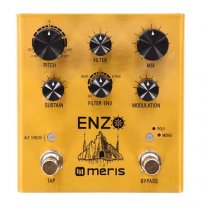
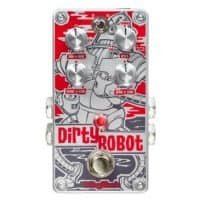















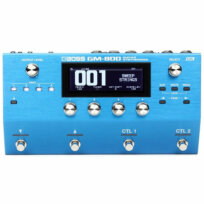
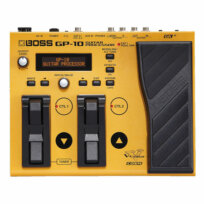
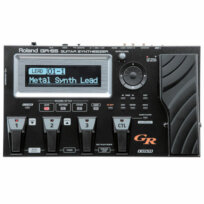
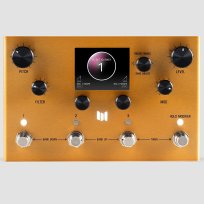
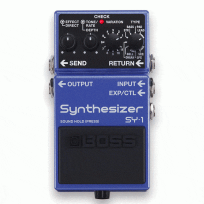

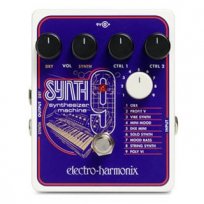
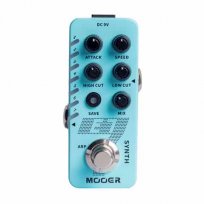
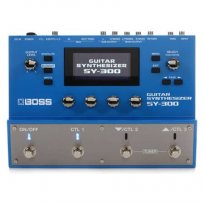
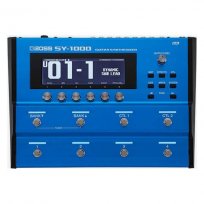
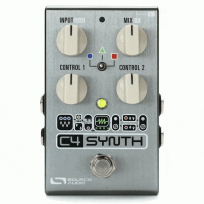
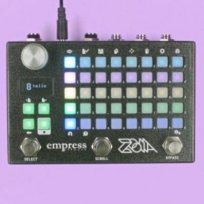
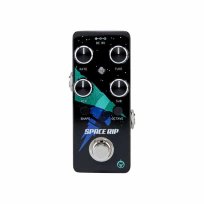
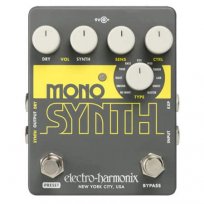
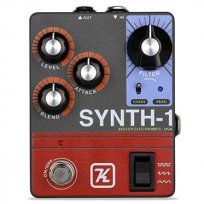

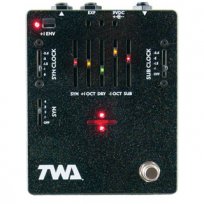


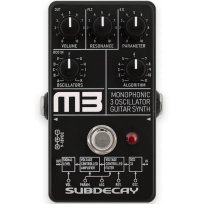
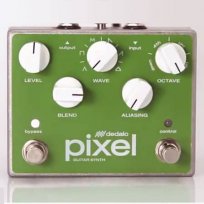
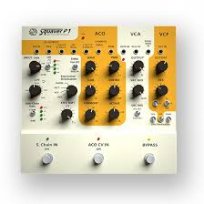








1 comment
Kris says:
Dec 7, 2021
Which of these can send CV pitch and gate to control external synths which provide those inputs (Behringer Model D, Roland SE-02 to name few)? I think Sonic Smith Squaver P1+ should be able to to that, but is there a cheaper option? I already have Source Audio C4, and Roland SE-02, so no need for another complex pedal, something rather simple, but effective in tracking, which can send out CV pitch and gate.